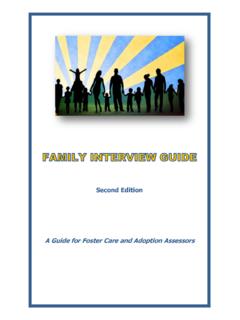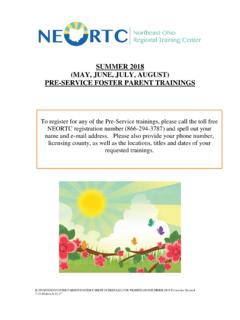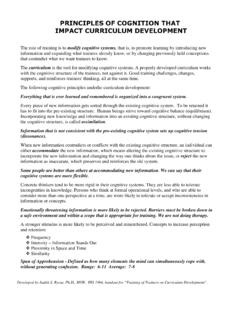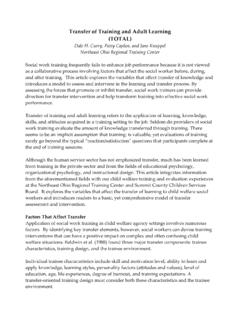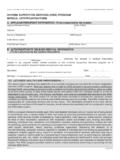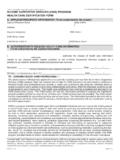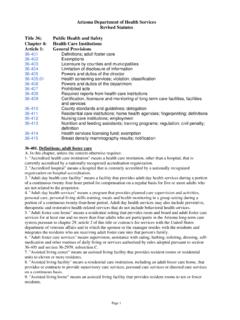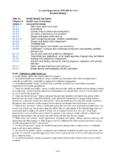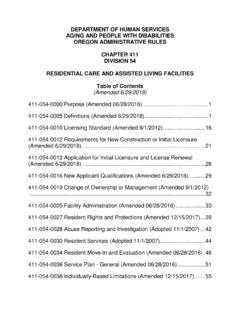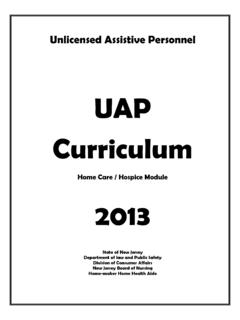Transcription of Supervisor Checklist - OCWTP
1 Ohio Child Welfare Training Program Supervisor Checklist Individual Case Conferences June 2015 Written by the Institute for Human services for the Ohio Child Welfare Training Program and The Ohio Department of Job and Family services Supervisor Resource June 2015 2 Written by IHS for the Ohio Child Welfare Training Program Case Conferencing Individual case conferences have traditionally been the primary supervisory vehicle for monitoring compliance to legal, agency, and best practice requirements, and for providing clinical consultation to workers, guiding them in making accurate case decisions. To ensure a continual focus on child safety, permanency, and well-being, supervisors must pay particular attention to worker assessments regarding child vulnerabilities and protective capacities of families. Making accurate assessments requires that caseworkers possess skills in a number of areas: critical thinking, engagement, interviewing, observation, and documentation.
2 Supervisors must have a structure in which they can evaluate worker skills, provide necessary feedback and direction, and be assured that the assessments of child vulnerabilities and protective capacities drive all key case decisions. Safety Assessment What contacts have been made on this case? Describe when and with whom. What has the worker been able to learn during home visits regarding: Safety threats, child vulnerabilities, and protective capacities of the family? Level of protective intervention necessary: was there immediate protective intervention necessary to ensure child s(ren s) safety? Was a Safety Plan developed, or was/will the case be safely referred to other community agencies? Safety factors for the caseworker? When is the next scheduled contact with the child(ren)? Parent(s)? Caregiver(s)? What information still needs to be known? Completion date of the Safety Assessment? What are the next steps?
3 Supervisor Resource June 2015 3 Written by IHS for the Ohio Child Welfare Training Program Family Assessment What contacts have been made since the last case conference? During home visits, what observations were made about: The environment? The child(ren)? The parents? What has worker been able to learn during home visits regarding: Risk contributors ( , conditions that may underlie and/or perpetuate maltreatment)? The family s perception of their own strengths and problems? (Reassessment of) Safety threats, child vulnerabilities, and protective capacities of the family? Whether other agencies need to be involved with the family? What information has been gathered in the actuarial risk assessment? What is the case disposition? Is the family engaged? How does the worker know? What strategies can be used to engage the family in the assessment process? Have collateral contacts been made? If so, what/with whom?
4 What are the family s protective capacities? What can be done to supplement the protective capacities of the family? Is case documentation up to date/entered in SACWIS? Review genogram and ecomap, if any. Discuss any implications for services . Supervisor Resource June 2015 4 Written by IHS for the Ohio Child Welfare Training Program When is the next scheduled contact with the child(ren)? Parent(s)? What still needs to be known about the family that would add to the understanding about problems and potential solutions? Case Planning What are the worker s recommendations regarding the goal for this family? What are the Concurrent Plan recommendations? What is the status of the Case Plan development? How is the family engaged in the Case Plan development? / What has the worker done to engage the family? What are the behavioral changes (objectives) in the Case Plan? What are the activities to meet those objectives?
5 What are the time frames? Case Reviews When did worker have contacts with the child(ren)? Parent(s)? Caregiver During contacts, what observations were made about: The environment The child(ren) The parents The caregivers Supervisor Resource June 2015 5 Written by IHS for the Ohio Child Welfare Training Program What has worker been able to learn during home visits regarding: Case plan progress/barriers? Any progress with regard to safety threats, child vulnerabilities, and protective capacities of the family? Any additional information known about the risk contributors ( , conditions that may underlie and/or perpetuate maltreatment)? Any change in family s perception of the safety threats and their protective capacities? Whether there is anything more that can be done to supplement the protective capacities of the family? Whether there are other agencies that need to be involved with the family? Review placement and permanency issues ( the permanency goal/concurrent plan to be achieved with this family, etc.)
6 In addition to contacts with the family, what other activities have been accomplished by the worker since the last case conference? What is the frequency of visitation between worker/child? Worker/parent? Siblings? Parent/child? Is there a need to modify the frequency and/or location of visits? What is the family s level of engagement with worker? With service providers? How does the worker know? Are there additional/different strategies that can be used to engage the family? Is case documentation up to date/entered in SACWIS? When is the next scheduled contact with the child(ren)? Parent(s)? Caregiver? What additional information still needs to be collected? Supervisor Resource June 2015 6 Written by IHS for the Ohio Child Welfare Training Program Reunification / Case Closure What were the original safety issues that resulted in the need for placement? Have the contributors to prior maltreatment or future risk of maltreatment been sufficiently reduced or eliminated to assure the child s(ren s) safety in the home?
7 Describe. Reassessment of current safety threats, child vulnerabilities, and protective capacities of the family. Have the risk contributors ( , conditions that may underlie and/or perpetuate maltreatment) been significantly alleviated? Has the family developed and enhanced their strengths/protective capacities? Are sufficient resources available to them to maintain their stability and sustain the changes? Describe. What is the family s current perception of the safety threats and their protective capacities? What is the child s(ren s) and family s readiness for reunification? How does the worker know this? What additional support and services will the child(ren) and family need to minimize their stress during reunification, and to facilitate their readjustment? Is reunification recommended? If reunification is not possible, what other permanent placement options are available? Is case closure recommended? Supervisor Review Supervisor Resource June 2015 7 Written by IHS for the Ohio Child Welfare Training Program Prior to all case conferences, supervisors should review the following: The reasons for involvement with the family and history of the case Case notes and case records from the previous case conference Ongoing supervisory observation notes concerning the caseworker ( , telephone calls with clients, agency visitations, interviews with the family) Status of worker completion of required documentation and reports ITNA needs data report and the caseworker s Individual Development Plan Documentation of coaching activities, if any To ensure caseworkers are adequately prepared for the case conference, supervisors can provide their staff with a copy of this Checklist .
8 Administrative, Educational, and Supportive Supervision Supervisors can also use the case conference as an opportunity to incorporate elements of administrative, educational, and supportive supervision. For example: Administrative Addressing human resources and personnel issues as needed with worker Discussing the worker s management of his or her caseload Addressing policies, procedures, and documentation issues Reviewing compliance to required documentation procedures and time frames (case plans, SARs, placement, etc.) Educational Reviewing ITNA data and identify any emergent development needs Supervisor Resource June 2015 8 Written by IHS for the Ohio Child Welfare Training Program Reviewing coaching documentation Reinforcing use of Field Guide and other resources as needed Assisting workers in the development of critical thinking skills Supportive Addressing issues from a strengths-based perspective Addressing issues of caseworker behavior that appears to be resistant Discussing worker well-being and any stress-related concerns Provide time for worker to ask emergent questions on other cases not being reviewed in this conference Checklist content adapted from: Kadushin (2002), Supervision in Social Work.
9 New York: Columbia University. Dorman and Shapiro (2004). Preventing Burnout in Your Staff and Yourself. CWLA. Kemp, Marcenko, Hoagwood, Vesneski (2009). Engaging Families in Child Welfare services : Bridging Family Needs and Child Welfare Mandates. CWLA. CAPMIS Tool Kit, OCWTP Contributions from members of the Supervisor Focus Work Team, November 2010
